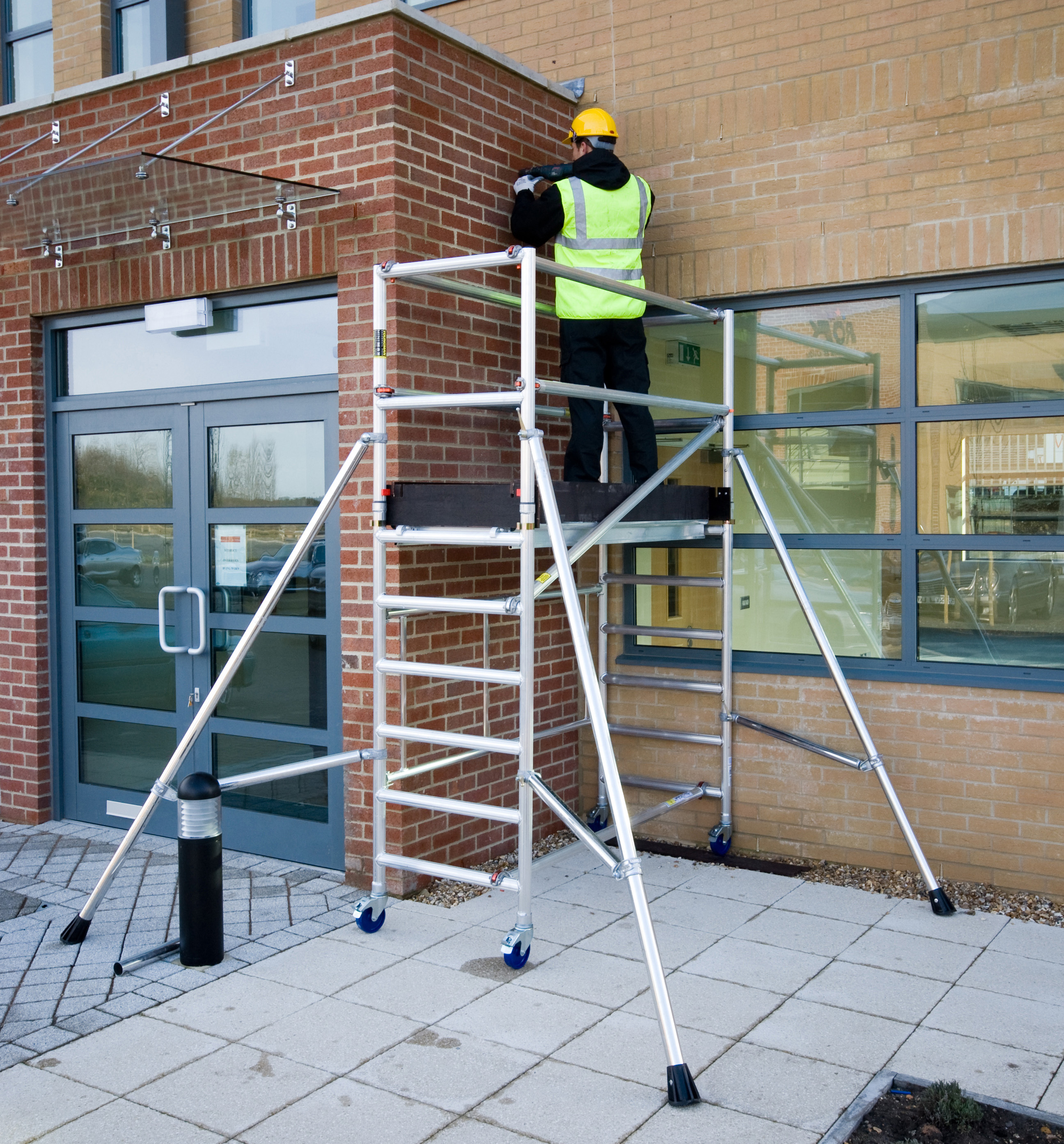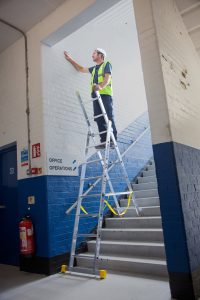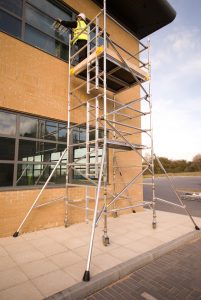
After the Building Safety Group carried out more than 20,000 site inspections last year, it was found that working at height remains the biggest danger for construction workers. Paul Bruton, Product Development Director at WernerCo, explains how housebuilders can protect their workforce through training and development.
There are lots of facts and figures surrounding accidents resulting from falls from height, and many tragic cases have resulted in fatalities due to the incorrect use of access equipment. There are also commercial implications around the breach of safety when using ladders and towers. Companies are now being fined when using equipment incorrectly – mainly due to workers not being adequately supervised, not being supplied with the right equipment or not receiving the necessary training.
Many of these situations can be easily avoided by carrying out the relevant assessments on site and by ensuring that the correct equipment is being used for the job. This is why staff training can be invaluable when using ladders or towers, as it ensures that teams are fully up to speed on regulations as well as spotting potential risk factors when working at height.
 Staff training
Staff training
Investing in staff training will ensure workers are safeguarded. If you have staff who are regularly working with ladders, it is recommended that they undertake the Ladder Association’s accredited training scheme which comprises both practical and theoretical assessments. The training covers a wide range of topics including when to use ladders, how to use, handle and store ladders, and highlighting potential hazards. For inspectors, delegates can learn how to assess and determine when it is appropriate to inspect a ladder or stepladder, and how to recommend the correct action if faults are found.
Those who complete the course will be issued with a Ladder Association certificate and a LadderCard, which remains valid for five years, allowing staff to prove their competence and gain trust among their trade peers and potential employers. Manufacturers such as WernerCo offer the accredited training scheme to help improve professionals’ knowledge and the company holds the sessions regularly at both its Burton upon Trent and Maldon facilities throughout the year.
Tower check
WernerCo is also a PASMA accredited training centre and offers the Towers for Users Course, which is suitable for those who will be responsible for specifying, assembling, dismantling, using, altering, moving and inspecting access towers. Throughout the one-day course users will be given theoretical and practical sessions around tower legislation, the PASMA codes of practice and what hazards are associated with using mobile access towers.
“Staff training can be invaluable when using ladders or towers, as it ensures that teams are fully up to speed on regulations as well as spotting potential risk factors when working at height.”
It is vital for anyone who will work with towers to become PASMA trained as it demonstrates competency. Additionally, the majority of sites now require you to have undertaken the training before you can work with access towers. The course covers a wide range of towers and isn’t manufacturer specific. However, it is crucial when choosing your tower that it conforms to EN1004 to ensure the equipment you’re working with meets minimum safety requirements.
As well as working with standard towers, PASMA offers more advanced courses for specific tower builds. The course currently covers cantilevers, towers on stairs and end-linked towers. Support doesn’t just end at the training session – it is understandable that staff may have further questions, so it is also recommended you get back in touch with the manufacturer of the tower who can advise you further.
 The right equipment
The right equipment
Although training is crucial, there are other steps you can take as an employer to safeguard your staff. It is vital to determine whether your employees are competent to carry out the job and that the equipment you’re using is appropriate. Commonly, user error and insufficient products are the main cause of accidents on site, but there are simple measures you can take to ensure you reduce risk.
Always consider the height of the task, as well as the duration and frequency that you’ll be working at height. It may be that a ladder isn’t suitable for the job and you require the use of a low-level work platform or an access tower. Determining the correct tool from the outset can not only save you time and increase productivity but it also can safeguard you from any unnecessary accidents.
It is an unfortunate reality that although injuries in the workplace as a result of falling from height are decreasing, they remain one of the most common causes of injury in the workplace. Undertaking some simple measures such as training, putting the necessary precautions in place and providing the right products for the job will go a long way to ensure the protection of staff.








